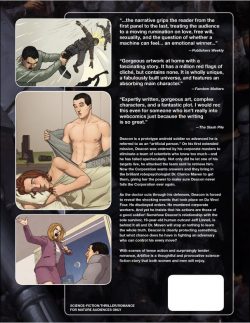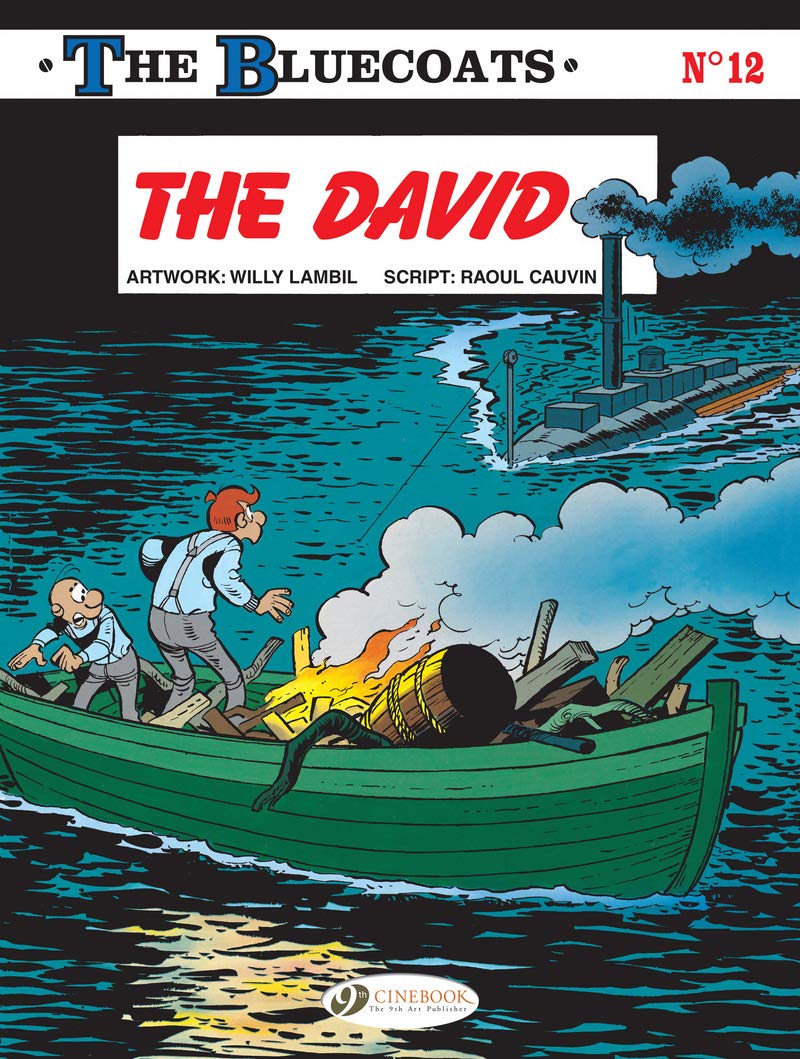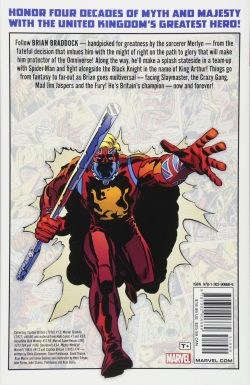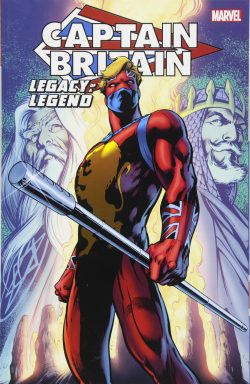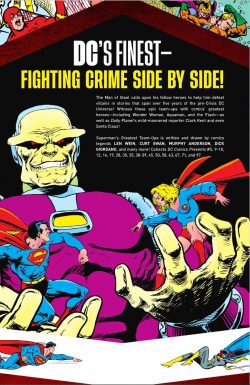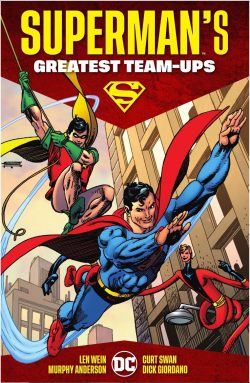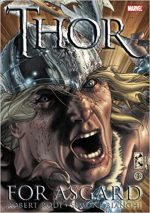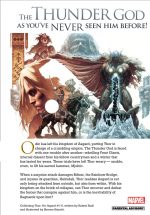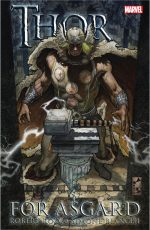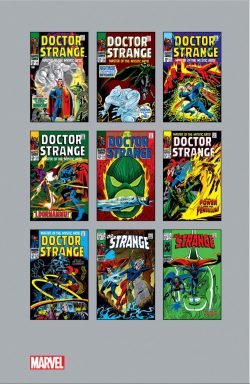
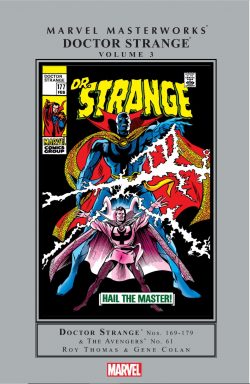
By Roy Thomas, Gene Colan, Dan Adkins, Tom Palmer, John Buscema, George Klein & various (Marvel)
ISBN: 978-0-7851- (HB/Digital Edition)
When the budding House of Ideas introduced a warrior wizard to their burgeoning pantheon in the summer of 1963, it was a bold and curious move. Anthologically, bizarre adventures and menacing aliens were still incredibly popular, but most dramatic mentions of magic or the supernatural (especially vampires, werewolves and their equally eldritch ilk) were harshly proscribed by a censorship panel which dictated almost all aspects of story content.
Almost a decade after a public witchhunt led to Senate hearings on the malign influences of words and pictures in sequence, comic books were ferociously monitored and adjudicated by the draconian Comics Code Authority. Even though some of the small company’s strongest sellers were still mystery and monster mags, their underlying themes and premises were almost universally mad science and alien wonders, not necromantic or thaumaturgic horrors.
Companies like ACG, Charlton and DC – and the remnants of Atlas/pre-Marvel – got around the edicts against thaumaturgical thrills and chills by making all reference to magic benign or even humorous… the same tone adopted by massively popular TV series Bewitched a year after Doctor Strange debuted.
That eldritch embargo probably explains writer/editor Stan Lee’s low key introduction of Steve Ditko’s mystic adventurer: an exotic, twilight troubleshooter inhabiting the shadowy outer fringes of society.
Capitalising on of the runaway success of The Fantastic Four, Lee had quickly spun off the youngest, most colourful member of the team into his own series, hoping to recapture the glory of the 1940s when The Human Torch was one of the company’s untouchable “Big Three†superstars. Within a year of FF #1, long-lived anthology title Strange Tales became home for the blazing boy-hero (from #101, cover-dated October 1962), launching Johnny Storm on a creatively productive but commercially unsuccessful solo career.
Soon after, in Tales of Suspense #41 (May 196), latest sensation Iron Man battled a crazed scientific wizard dubbed Doctor Strange, and with the name successfully and legally in copyrightable print (a long-established Lee technique: Thorr, The Thing, Magneto, The Hulk and others had been disposable Atlas “furry underpants monsters†long before they became in-continuity Marvel characters), preparations began for a truly different kind of hero.
The company had already devised a quasi-mystic troubleshooter for an short run in Amazing Adventures (volume 1 #1-4 & #6 spanning June-November 1961).
The precursor was balding, trench-coated savant Doctor Droom – later retooled as Doctor Druid when his exploits were reprinted in the 1970s. He was a psychiatrist, sage and paranormal investigator tackling everything from alien invaders to Atlanteans (albeit not the ones Sub-Mariner ruled). He was subsequently retro-written into Marvel continuity as an alternative candidate for Stephen Strange‘s ultimate role as Sorcerer Supreme…
After a shaky start, the Master of the Mystic Arts became an unmissable icon of the cool counter-culture kids who saw, in Ditko’s increasingly psychedelic art, echoes and overtones of their own trippy explorations of other worlds. It might not have been the authors’ intention but certainly helped keep the mage at the forefront of Lee’s efforts to break comics out of the “kids-stuff†ghetto…
After the originator abruptly left the company at the height of his fame and success in early 1967, the feature went through a string of creators before Marvel’s 1968 expansion allowed a measure of creative stability as the mystic master won his own monthly solo title in neat moment of sleight of hand by assuming the numbering of Strange Tales. Thus, this enchanting full colour compilation gathers Doctor Strange #169-179 plus a crossover from Avengers #61, spanning cover-dates June 1968 to April 1969. It also sagely includes every issue’s stunning cover – a gallery of wonders from Dan Adkins, Gene Colan, John Buscema and Barry (not yet Windsor) Smith.
Previously, Dr. Stephen Strange had entered and escaped the terrifying dimension of imagination; defeated Scientist Supreme Yandroth; learned the origin of the his mentor The Ancient One and lost his extradimensional lover Clea to the outer infinities. Now a new era dawned for the mystic master just as Big Things were happening at Marvel…
In 1968, after more than a decade under a restrictive and limiting retail contract, The House of Ideas secured a new distributor and explosively expanded with a tidal wave of titles. Twin-featured “Split-Books†such as Strange Tales were divided: replaced by full-length solo series for the cohabiting stars. For the Master of the Mystic Arts, that meant a bit of rapid resetting…
Following an Introduction from sole scripter Roy Thomas, sorcerous super-shenanigans resume with a reworking of the Mage’s origins.
Extrapolating and building upon the Ditko masterpiece from Strange Tales #115, ‘The Coming of Dr. Strange’ by Thomas & Dan Adkins details how he was once America’s greatest surgeon. A brilliant man, yet greedy, vain and arrogant, he cared nothing for the sick except as a means to wealth and glory. When a self-inflicted, drunken car-crash ended his career, Strange hit the skids.
Fallen as low as man ever could, the debased doctor overheard a barroom tale leading him on a delirious odyssey – or, perhaps more accurately, pilgrimage – to Tibet, where a frail, aged mage changed his life forever. Eventual enlightenment through daily redemption transformed Stephen the derelict into a solitary, dedicated watchdog at the fringes of humanity, challenging every hidden danger of the dark on behalf of a world better off not knowing what dangers lurk in the shadows.
The saga also featured his first clash with the Ancient One’s other pupil Mordo revealing how Strange thwarted a seditious scheme, earning the Baron’s undying envious enmity…
The expanded exploration of the transformation from elitist, dissolute surgeon into penitent scholar and dutiful mystic guardian of humanity neatly segues into another clash with a lethally persistent foe as ‘To Dream… Perchance to Die!’ (#170) finds the Ancient One trapped in a coma thanks to the malevolent lord of dreams. To wake his master, Strange impetuously enters the astral realms and defeats Nightmare on his own terms and turf after which #171 introduces someone who will become a key creator in the mystic’s career.
Pencilled by eventual inker supreme Tom Palmer, with Adkins supplying finishes, ‘In the Shadow of… Death!’ sees Strange lured away from Earth by news of long-lost Clea. To facilitate a rescue mission, the sorcerer unthinkingly calls on English associate and sometimes arcane ally Victoria Bentley, unaware or uncaring of her romantic feelings for him.
Their trek through the outer deeps of The Realm Unknown is fraught with deadly traps and peril, but does locate missing Clea… after Bentley is captured and Strange ambushed by his most powerful and hate-filled foe…
A magical creative team formed for Doctor Strange #171 as Gene Colan signed on for an astoundingly experimental run with Palmer handling inks. Humanity is endangered by ‘…I, Dormammu!’ as the Dark God reveals he has orchestrated many recent attacks designed to weary and de-power Earth’s magical champion. The gloating fiend shares how his apparent destruction battling conceptual being Eternity in fact resulted in transdimensional exile and the subjugation of a demonic race dubbed Dykkors: now his eager and willing foot-soldiers ready to ravage the realms of Mankind. The Dark Despot has even suborned his hated sister and former foe Umar the Unspeakable to his scheme…
As always, Dormammu has underestimated the valour and ingenuity of Stephen Strange. ‘…While a World Awaits!’ the monstrous conqueror leads a demonic army through the Doorway of Dimensions, leaving the human mage time to liberate Clea and Victoria, and engage the fearsome forces in a mystic delaying tactic that once again allows Dormammu to defeat himself…
As former associate Dr. Benton seeks to convince Strange to abandon his crazy charlatanry for a life of respectable medical consultancy, #174 sees the Master of the Mystic Arts helping magical Clea adapt to mundane life on Earth. However, ‘The Power and the Pendulum’ finds him accompanying secretly despondent Victoria home to England, before being diverted to a foreboding castle where weirdly flamboyant Lord Nekron has laid a devilish trap.
The crazed noble has made a bargain with hellborn Supreme Satannish, offering his soul for fame and immortality. Instead, the Lord of Lies devised a counter-offer, calling for the substitution of another mystic at the end of one year. With time running out and Strange fitted up for the switch, doom seemed inevitable, but Earth’s champion had one timely trick left to play…
The late sixties were an incredibly creative period and comics greatly benefitted from the atmosphere of experimentation. Colan used page layouts in wildly imaginative ways that stunned many readers of the time, but that same expanded vision has often been cited as the reason for the title’s poor sales. I suspect the feature’s early cancellation was as much the result of increasingly sophisticated and scary stories from Thomas, who early on tapped into the growing global fascination for supernatural horror, and urban conspiracy such as seen in #175’s ‘Unto Us… the Sons of Satannish!’ – coincidentally, the last issue to carry his original title logo.
Just like Ira Levin’s 1967 book and hit 1968 movie Rosemary’s Baby, Strange’s next case involved devil-worship in safely mundane Manhattan, working in secret to achieve diabolical aims. Deprived access to the film’s simmering sexuality and mature themes, Thomas, Colan & Palmer stuck to comic book strengths as Clea’s immigrant experience abruptly encompasses ostracization, isolation, suspicious reactions and even assault by ordinary New Yorkers. This leads her into the hands of hidden cult The Sons of Satannish, whose charismatic leader Asmodeus deals with the devil, and attempts to gain ultimate power by eradicating Strange and replacing him in #176’s ‘O Grave Where is Thy Victory?’, with a new, eerie and abbreviated masthead.
Those aforementioned sales problems were not going away and #177’s concluding chapter ‘The Cult and the Curse’ addressed the issue in a tried and true manner. Exiled from his own existence and persona, Strange rescued Clea but could only strike back and reclaim his life by magically reinventing himself and devising a brand new look. The mask and tights of a traditional superhero were apparently the only way to outmanoeuvre Asmodeus, but sadly, not in time to stop him activating a deathbed curse to destroy the world…
The super-suited and booted modern mage needed information to proceed, and Dr. Strange #178 finds him seeking to question the other Satannish worshippers Asmodeus had callously banished. Once again hoping to exploit poor Victoria Bentley, Strange recognises her new neighbour Dane Whitman as part-time Avenger The Black Knight and his plea for aid results in an assault on the dimension of decay-god Tiborro ‘…With One Beside Him!’
The saga finally concluded in Avengers #61 with ‘Some Say the World Will End in Fire… Some Say in Ice!’ by Thomas, John Buscema & George Klein. After Asmodeus’ recued minions reveal that the satanic cult’s failsafe spell unleashed Norse demons Surtur and Ymir to destroy the planet, Strange and Black Knight recruited The Vision, Black Panther and Hawkeye to help them save the world on two fronts…
Although the comics spellbinding ends here, also on offer is the cover of Dr. Strange #179: a Barry Smith treat from 1969 that fronted an emergency reprint of Lee & Ditko’s ‘The Wondrous World of Dr. Strange’ from Amazing Spider-Man Annual #2. It joins a House ad for the 1968 relaunch, a half dozen original art pages by Adkins, Colan & Palmer plus the cover art to #174 and 175.
The Wizard of Greenwich Village has always been an acquired taste for mainstream superhero fans, but the pioneering graphic bravura of these tales and the ones to come in the next volume left an indelible mark on the Marvel Universe and readily fall into the sublime category of works done “ahead of their timeâ€. Many of us prefer to believe that Doctor Strange has always been the coolest of outsiders and most accessible fringe star of the Marvel firmament. This glorious grimoire is a miraculous means for old fans to enjoy his world once more and the perfect introduction for recent acolytes or converts created by the movie iteration.
© 2016 Marvel Characters, Inc. All rights reserved.




